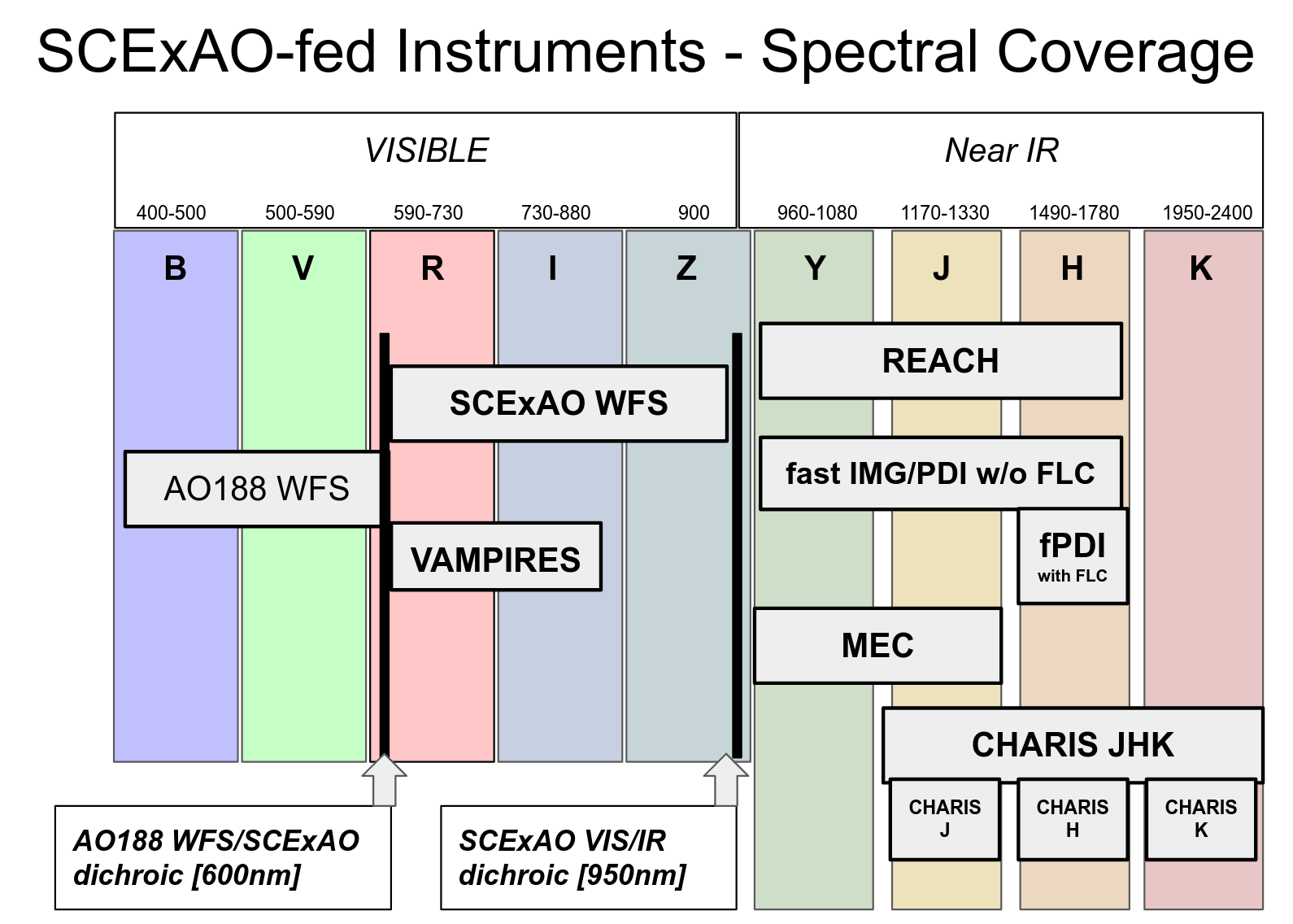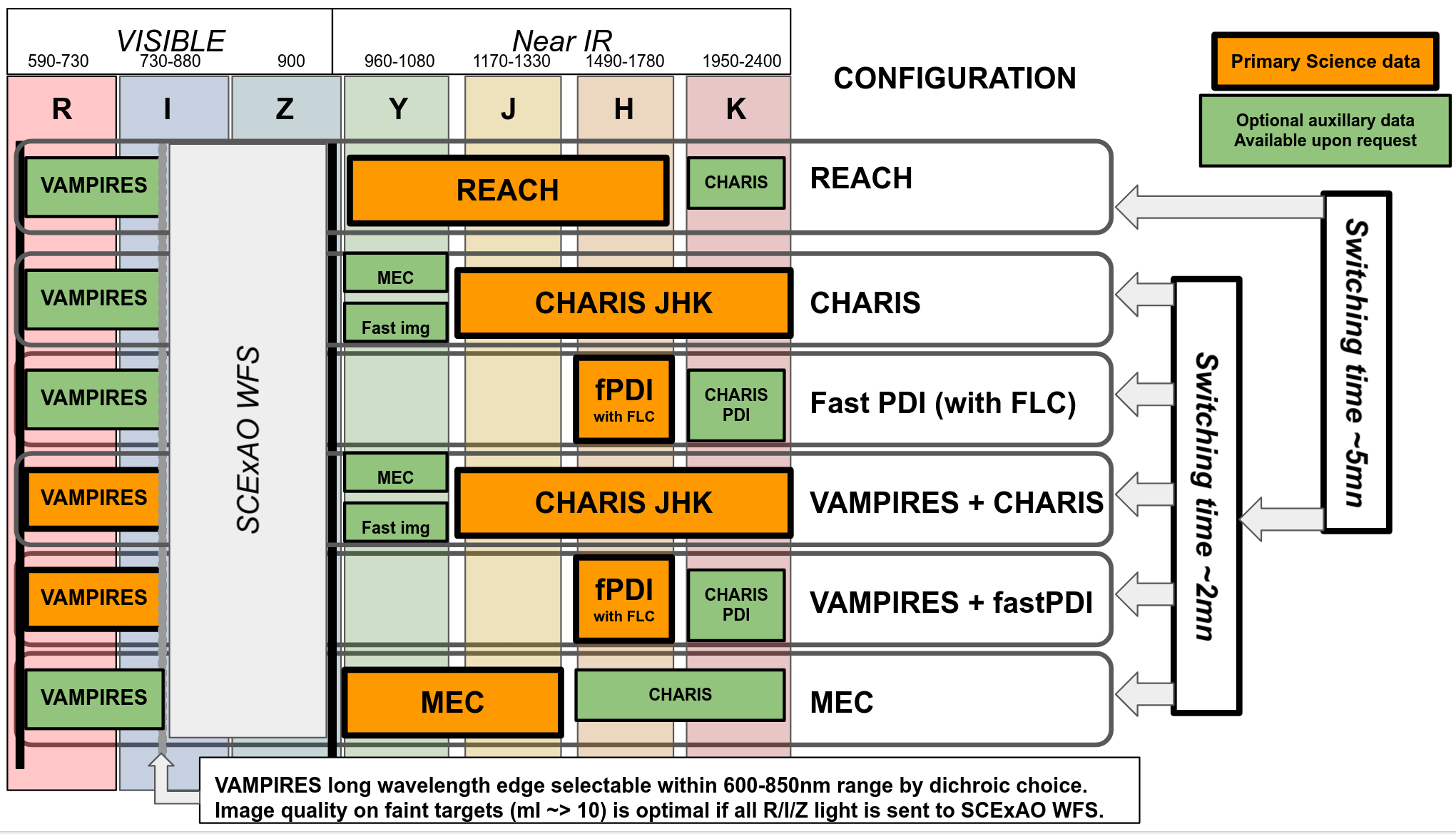Guidelines to Proposers and Observers
Last updated Feb 7, 2022.Before submitting a proposal
Proposers should ensure that the instrument selection for their proposal includes the primary science data to be collected. All observations including REACH data should select REACH as the primary instrument. Optional auxiliary data to be collected should be described in the proposal under the instrument configuration section.
If multiple modes are used during the night, please describe switching schedule and consult with the instrument team to ensure the proposed observation plan is viable: use of multiple instruments/modes increases the time required for instrument calibrations, may require additional support staff, increases science data storage requirements, and may require additional pre-observation instrument checks and alignments.
After proposal acceptance
Requests to acquire optional auxiliary data or switching between modes that are not described in the proposal will be handled on a best-effort basis and require prior approval from the Subaru Telescope Telescope Allocation Committee. Requests should be sent to the Science Operations division chief or Director with a description about the necessity of the additional instruments and why it was omitted in the original proposal.
Instruments and Modules
SCExAO feeds instruments and modules spanning the visible to near-IR wavelength range.

Multiple instruments and modules can be operated simultaneously. The chart below outlines the main modes of operation for the instrument. Modules/instruments on the same horizontal line can be operated simultaneously.

Instruments/modules available for regular open use scientific observations
CHARIS
CHARIS is a near-IR integral field spectrograph optimized for high constrast imaging. CHARIS can be used in non-coronagraphic or coronagraphic imaging modes, and also supports polarization differential imaging.VAMPIRES
VAMPIRES is a dual-beam visible light imager and polarimetric differential imager. VAMPIRES supports aperture masking modes.REACH
REACH provides post-coronagraphic fiber-fed high resolution spectroscopy in the near-IR.MEC
MEC is a high speed, photon counting, energy resolving camera using the Micro Kinetics Inductance Detectors (MKIDs) technology.Fast Polarimetric Differential Imaging
Fast-PDI provides high frame rate polarization differential imaging in the near-IR to observe scattered light features around stars.File ./030openuse.web/content.html last modified 07/02/2022 16:52:56 HST
